Boosting Manufacturing ROI: Proven Strategies for Maximum Profitability
Manufacturing ROI, or return on investment, is a critical metric in determining the profitability and efficiency of manufacturing operations.
In this article, we will explore key strategies and best practices for maximizing manufacturing ROI.
Key Takeaways
-
Manufacturing ROI is a key financial metric calculated by dividing net profit by total investment cost, serving as a tool for informed decision-making and strategic growth.
-
Effective ROI measurement requires clear objectives, key performance indicators, and a thorough understanding of all associated costs, including depreciation and operational expenses.
-
Digital transformation and the use of software platforms enhance ROI analysis by providing real-time data, allowing manufacturers to optimize investments and improve operational efficiency.
Understanding Manufacturing ROI
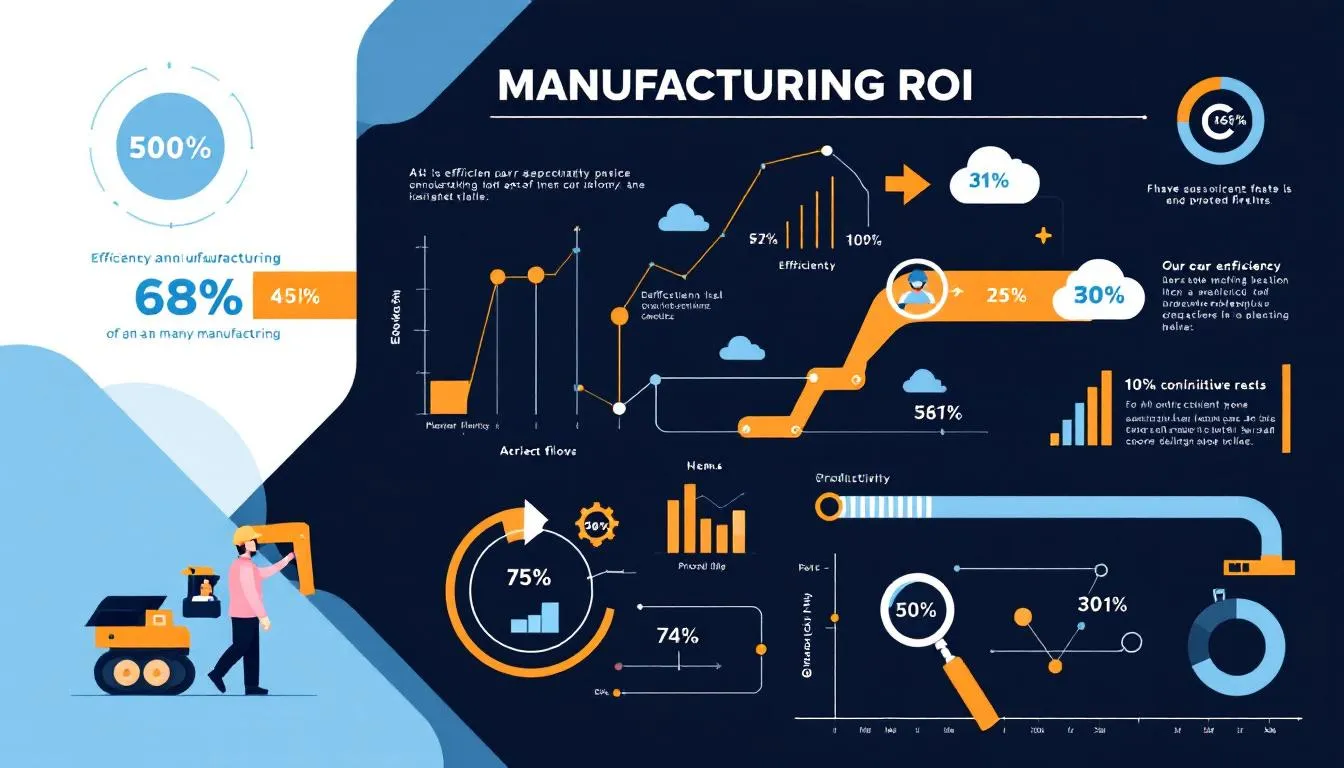
Manufacturing ROI, or return on investment, serves as a crucial financial metric that helps businesses assess the profitability of their investments. Key points include:
-
It is calculated by dividing the net profit by the total investment cost.
-
The result is multiplied by 100 to express it as a percentage.
-
This simple yet powerful formula allows manufacturing companies to evaluate the effectiveness of their investments.
-
It helps businesses make informed decisions that drive growth and competitive advantage.
ROI is not just about numbers; it reflects the overall health and efficiency of a manufacturing operation. Measuring ROI allows companies to gauge the financial returns from their investments, offering a clear picture of their profitability and return on investment roi. This insight is invaluable for guiding strategic growth, identifying areas for improvement, and ensuring that resources are allocated effectively using the roi formula.
In the manufacturing industry, ROI is a key performance indicator that influences various aspects of business operations, from production efficiency to brand reputation. Understanding the importance of calculating ROI enables manufacturing companies to optimize investment strategies, reduce operational costs, and boost overall profitability. Nearly half (49%) of manufacturing CEOs plan on accelerating or maintaining current levels of innovation investment, reflecting the industry’s commitment to staying competitive and driving growth through strategic initiatives. Ecosystem-based business models can also contribute significantly to a company's annual revenues, providing additional financial benefits and growth opportunities.
Key Metrics for Measuring ROI in Manufacturing
Measuring ROI in manufacturing requires a detailed articulation of both the gains from investment and the associated costs. Key performance indicators (KPIs) such as net profit, cost savings, and revenue generated are essential for an accurate ROI assessment. These financial metrics provide a comprehensive view of the investment’s impact on the company’s bottom line.
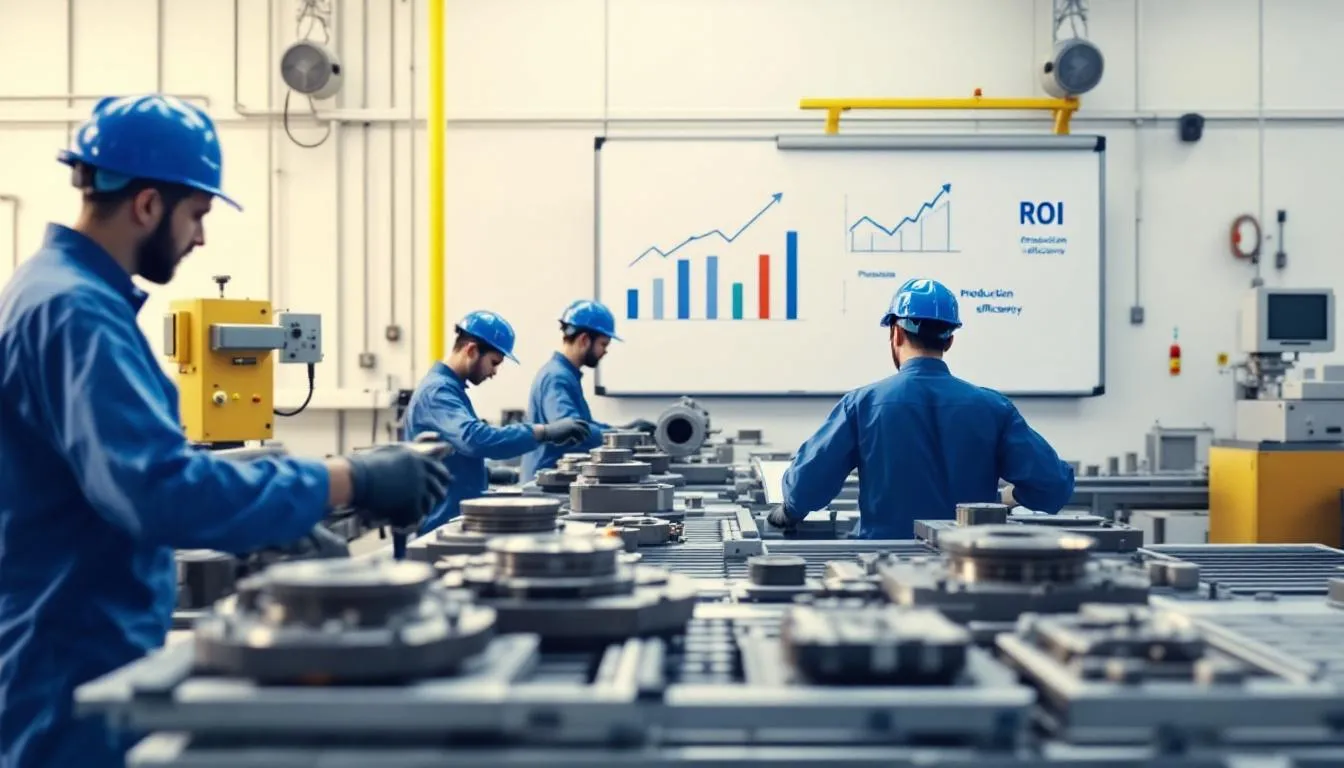
Market segmentation analysis is another critical metric that helps define potential revenue increases from new markets investments. Understanding different market segments allows manufacturing companies to tailor strategies to specific customer needs, maximizing ROI. This approach not only enhances profitability but also improves customer satisfaction and loyalty. Offering products as-a-service can improve EBIT margins 3x-7x while also producing steadier revenue streams, making it a compelling strategy for manufacturers aiming to diversify their revenue models.
Establishing clear goals and objectives is crucial for effective ROI measurement. Without a clear understanding of what the investment aims to achieve, it becomes challenging to measure its success accurately. Setting SMART goals allows companies to track improvements in operational efficiency and productivity, achieving higher ROI. SMART goals are:
-
Specific
-
Measurable
-
Achievable
-
Relevant
-
Time-bound
Calculating ROI for Manufacturing Investments
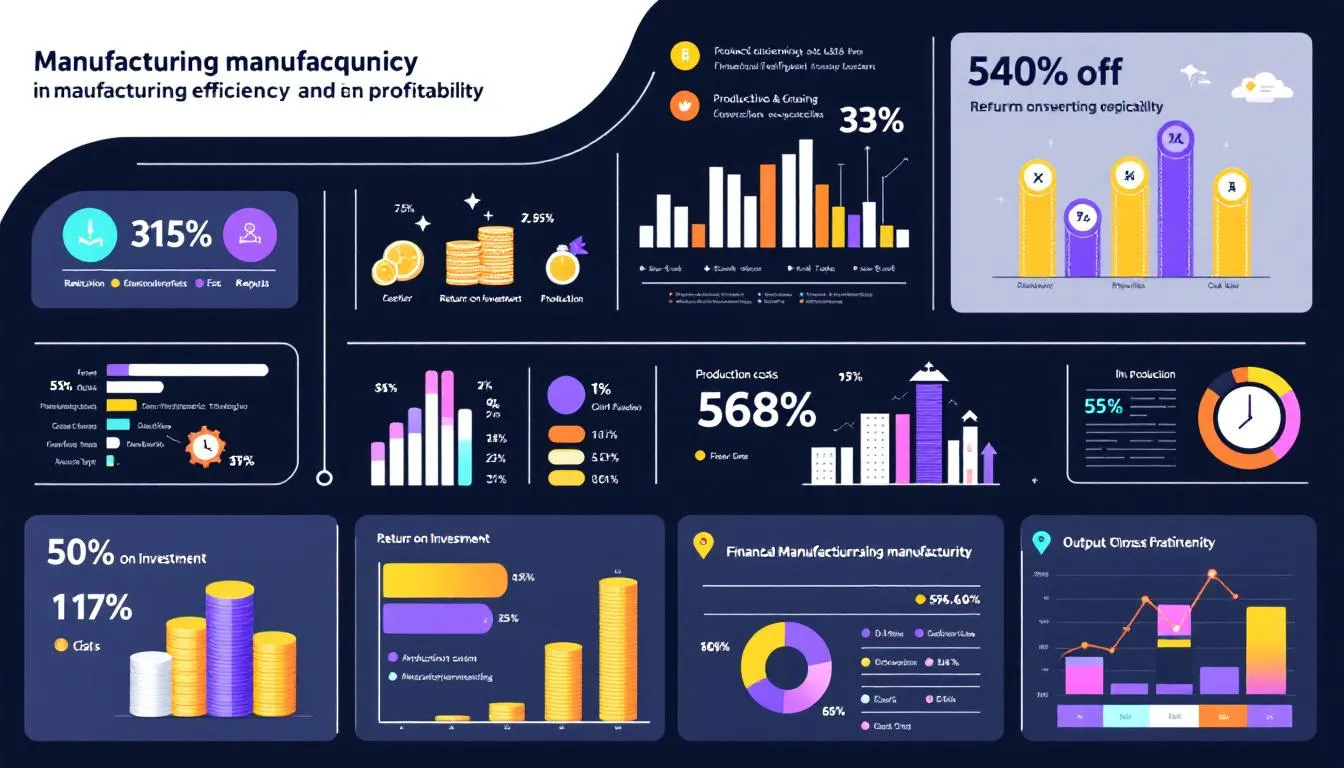
Calculating ROI in manufacturing involves more than just applying a formula. It requires a thorough understanding of all associated costs, including installation, operational, and maintenance expenses. An effective ROI calculation highlights not only the financial gains but also the investment cost, providing a comprehensive view of the investment’s impact on the company’s finances.
When evaluating the ROI of a new machine, it is important to consider the purchase price, installation costs, and any associated expenses. Factoring in the expected efficiency improvements and resulting financial benefits over time helps determine whether the new machine will deliver a positive return on investment.
Establishing a target ROI is a crucial step in evaluating potential investments. Setting a benchmark allows companies to compare different investment opportunities and identify the most promising ones. A commonly accepted annual ROI benchmark for businesses is between 7% and 10%, adjusted for inflation. This target helps companies ensure that their investments are financially viable and align with their long-term strategic goals. However, it is important to note that 70% of investments in manufacturing fail to meet their goals, emphasizing the need for careful planning and execution. For marketing investments, a 5:1 revenue to marketing cost ratio is considered strong for most manufacturing businesses, providing a clear indicator of effective resource allocation.
The time frame of investments plays a significant role in ROI calculation. Key points to consider include:
-
Short-term and long-term projects may yield different ROI results.
-
It is essential to consider the duration of the investment when evaluating its potential returns.
-
Calculating the payback period helps companies determine the time required to recoup their initial investment, aiding in decision-making.
For a precise ROI calculation, manufacturing companies must also calculate revenue generated from the investment. This involves analyzing sales data, production output, and other relevant financial metrics. Understanding the total cost and financial return enables companies to make decisions that enhance profitability and drive growth, including evaluating the cost ratio.
Assessing Net Benefits in Manufacturing Initiatives
Assessing net benefits is a vital step for manufacturing companies aiming to maximize their return on investment (ROI). Net benefits represent the total value gained from an initiative after accounting for all associated costs, including operational costs, labor costs, equipment expenses, and other operating expenses. To accurately calculate net benefits, manufacturers must consider both financial benefits—such as cost savings, increased productivity, and revenue generated—and non-financial benefits, including improved customer satisfaction and enhanced brand reputation.
The process of calculating net benefits involves subtracting the total cost of an investment from the total revenue generated. This calculation should factor in all relevant expenses, from initial investment and ongoing maintenance to utility bills and training costs. By leveraging software platforms, manufacturing companies can efficiently track these variables, making it easier to conduct thorough ROI analysis and determine the true value of their initiatives.
For business leaders, understanding net benefits is crucial for making informed investment decisions. Assessing net benefits not only highlights areas where operational efficiency can be improved but also uncovers opportunities for cost savings and increased profitability. Additionally, evaluating non-financial benefits—such as customer satisfaction and brand reputation—ensures a holistic approach to ROI analysis, supporting long-term business growth.
In today’s competitive manufacturing industry, regularly assessing net benefits enables companies to optimize their operations, reduce unnecessary costs, and achieve higher financial returns. By focusing on both the tangible and intangible gains from each investment, manufacturers can stay agile, meet evolving customer needs, and maintain a strong competitive edge.
Factors Influencing Manufacturing ROI
Several factors influence the ROI of manufacturing investments, and understanding these factors is crucial for accurate ROI analysis. Equipment depreciation, for instance, plays a significant role as it reduces the asset’s value over time. Accounting for depreciation allows companies to better grasp the long-term financial impact of their investments.
Operational and maintenance costs are other critical factors that can fluctuate over time, impacting ROI. Regular maintenance can prevent unexpected failures and optimize production, leading to significant cost savings and improved operational efficiency. However, these operating expenses must be carefully managed to ensure they do not erode the investment’s profitability and money.
External factors such as economic changes and market conditions also influence ROI. Many factors, including fluctuations in supply chains, labor costs, and customer needs, can affect the financial returns of manufacturing initiatives. Companies must stay agile and responsive to these changes to maintain a competitive edge and maximize ROI. Collaboration in ecosystems can provide additional benefits of speed, flexibility, and lower capital commitments for manufacturers, further enhancing their ability to adapt to external challenges. Companies with high-performing ecosystems report greater growth opportunities than through traditional M&A, making ecosystem collaboration a strategic advantage.

A comprehensive ROI analysis should include not just financial returns but also the impacts on production efficiency and equipment longevity. Considering all these factors allows manufacturing companies to make informed investment decisions, enhancing profitability and driving long-term success.
Digital Transformation and Its Impact on ROI
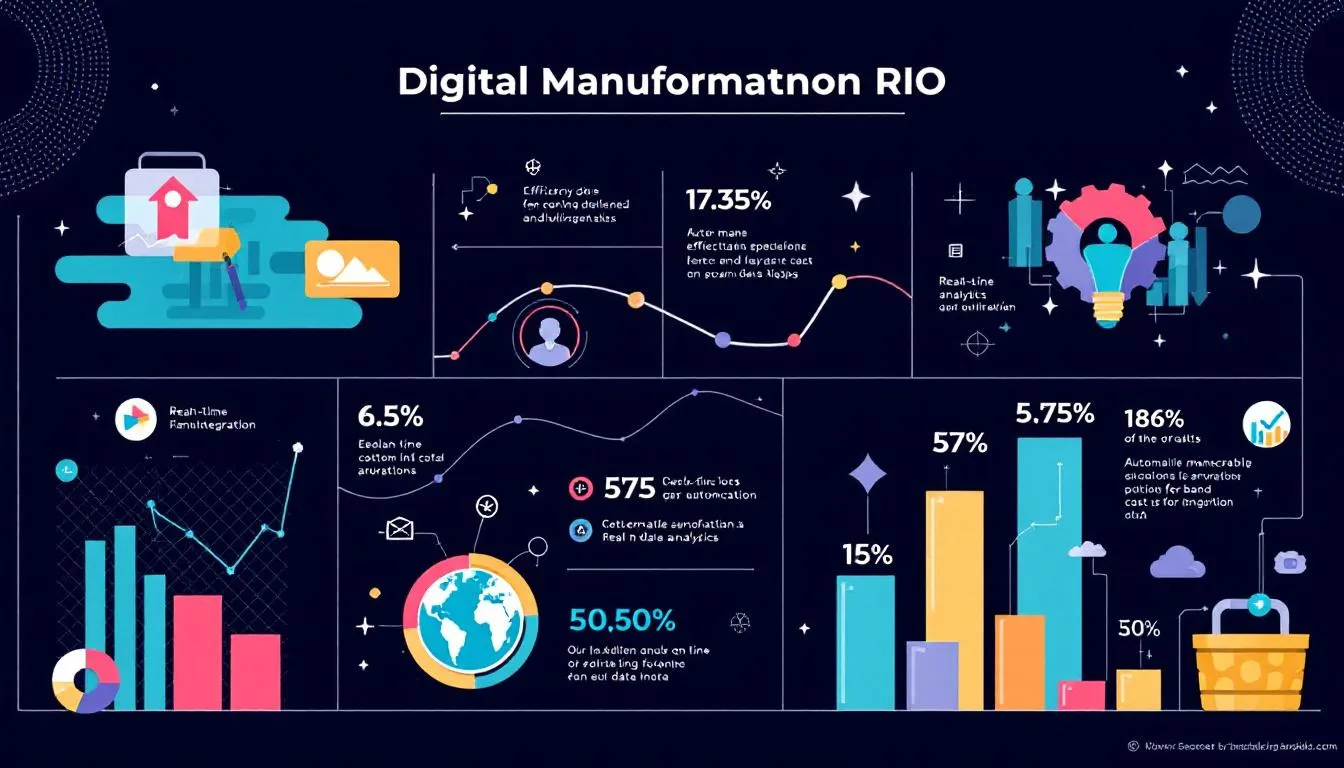
Digital transformation has revolutionized the manufacturing industry, leading to significant cost savings and improved operational efficiencies. Implementing robust data management and analytics solutions maximizes return on investment in digital technology. These technologies enable better resource allocation, project prioritization, and faster growth. Nearly 73% of manufacturers believe failing to invest in new digital technologies would result in falling behind competitors, highlighting the critical importance of embracing digital transformation. Additionally, more than one-third of manufacturers report that the data they create has at least doubled in recent years, underscoring the growing importance of effective data management. Data integration and veracity are foundational to provide one source of truth in manufacturing, ensuring that decisions are based on accurate and consistent information.
Investments in digital technologies also enhance customer satisfaction by enabling tailored offerings and improved customer experience. This not only drives sales and revenue growth but also strengthens brand reputation and customer loyalty. In an increasingly competitive market, digital transformation projects are essential for manufacturers to remain responsive to market demands and maintain a competitive edge. Training employees to use new analytical tools is critical for maximizing the value of these technology investments, ensuring their effective implementation and utilization.
Measuring the ROI of digital transformation initiatives requires clear benchmarks and key performance indicators. Understanding the financial returns from these investments justifies spending and reveals cost savings. This careful analysis ensures that digital strategies are aligned with the company’s overall business goals and deliver maximum value.
Evaluating Digital Transformation Success
Evaluating the success of digital transformation initiatives is essential for manufacturing companies seeking to achieve measurable improvements in operational efficiency, cost savings, and profitability. To accurately assess the impact of digital strategies, manufacturers should rely on a combination of financial and non-financial key performance indicators (KPIs).
Financial KPIs might include cost savings, revenue growth, and reductions in operating expenses, while non-financial KPIs can encompass improvements in customer satisfaction, brand reputation, and overall customer experience. By tracking these metrics, business leaders can conduct comprehensive ROI analysis and determine whether their digital transformation investments are delivering the expected financial benefits.
Digital transformation often involves the adoption of advanced technologies such as predictive maintenance, IoT sensors, and data analytics platforms. These tools help reduce unplanned downtime, optimize equipment performance, and streamline business processes, all of which contribute to a stronger ROI calculation. Additionally, digital strategies can enhance customer experience by enabling more responsive service and tailored solutions, further boosting customer loyalty and competitive edge.
A successful evaluation of digital transformation requires a holistic approach that considers both the direct financial returns and the broader impact on business operations and customer relationships. By regularly reviewing the effectiveness of digital initiatives, manufacturing companies can identify areas for improvement, refine their strategies, and ensure that future investments are aligned with their long-term business goals.
Ultimately, evaluating digital transformation success empowers manufacturers to make data-driven decisions, maximize the value of their investments, and maintain a leadership position in the rapidly evolving manufacturing sector.
Best Practices for Improving Manufacturing ROI
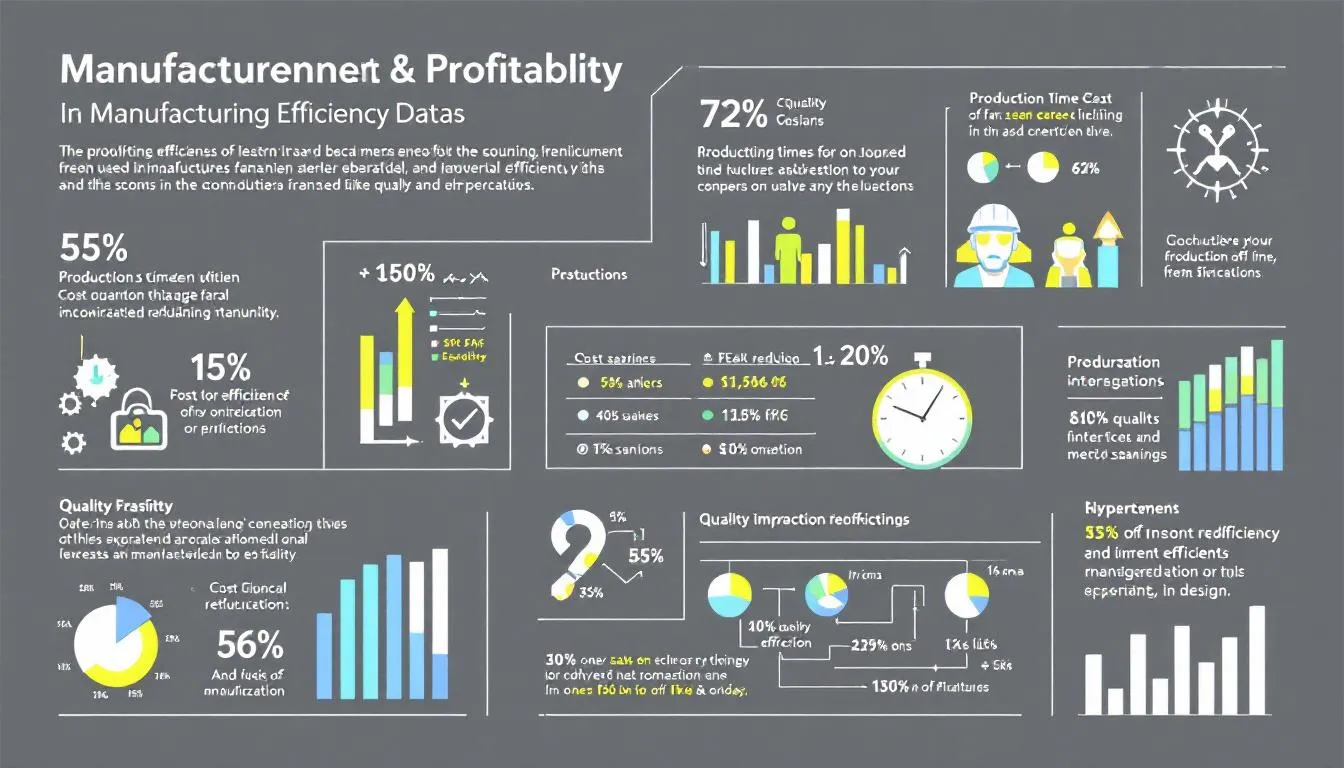
Implementing best practices is essential for improving ROI in the manufacturing sector. Preventive maintenance services, for example, can yield long-term financial benefits by reducing unexpected failures and optimizing production. Although the immediate costs of preventive maintenance can be high, the significant savings from avoiding unplanned downtime and repairs make it a worthwhile investment. Additionally, investing in advanced service models can significantly increase profit margins for manufacturers, offering a pathway to sustained financial growth.
Understanding the ROI of maintenance operations helps identify their financial impact on overall profitability. Calculating the ROI of different maintenance strategies helps companies make informed decisions that enhance operational efficiency and reduce costs. This approach ensures that resources are allocated effectively and that investments deliver maximum returns.
Connective analytics capabilities linked to specific performance objectives can lead to substantial improvements in product yield and reductions in production downtime. Leveraging data-driven insights allows companies to optimize production processes and achieve incremental improvements in operational efficiency. This focus not only enhances profitability but also strengthens the company’s competitive position in the market through a streamlined process.
Non-financial advantages, such as enhanced brand reputation and employee satisfaction, are also important for long-term success. Although these benefits are often hard to quantify, they play a crucial role in building a sustainable and resilient business. Focusing on both financial and non-financial benefits, including net benefits, enables companies to adopt a holistic approach to improving ROI.
Leveraging Software Platforms for ROI Analysis

Software platforms have transformed the way manufacturing companies analyze ROI through automation. Real-time data analytics provided by these platforms enable manufacturers to track key performance indicators accurately and make informed decisions for the company. Companies using off-the-shelf analytic tools yielded a median ROI of 140% compared to custom-developed tools, which achieved 104%, demonstrating the value of leveraging standardized solutions for ROI analysis. The manufacturing industry generates an average of roughly 2 petabytes of data every year, the highest of any industry, highlighting the critical role of data analytics in driving ROI improvements.
Data-driven approaches in software platforms significantly enhance a company’s ability to measure ROI. Streamlining data tracking and analysis with these technologies improves the accuracy of ROI calculations and ensures investments deliver expected financial returns. This precision aids in better decision-making and resource allocation.
The effective use of software platforms for ROI analysis also supports strategy planning and operational efficiency. By leveraging advanced analytics, companies can identify areas for improvement, optimize their business processes, and achieve higher profitability. This approach ensures that investments are aligned with the company’s overall business goals and deliver maximum value.
Enhancing Customer Experience to Drive ROI
Enhancing customer experience is a powerful strategy for driving ROI in the manufacturing industry. Satisfied customers are more likely to become repeat buyers, recommend a company’s products or services, and contribute to sustained revenue growth. In today’s competitive manufacturing sector, prioritizing customer experience can set a business apart and directly impact its bottom line.
Manufacturers can leverage digital technologies such as predictive maintenance and IoT sensors to proactively address customer needs, minimize unplanned downtime, and ensure reliable product performance. These innovations not only improve operational efficiency but also enhance the overall customer experience by delivering consistent quality and responsive support.
ROI analysis plays a crucial role in evaluating the effectiveness of customer experience initiatives. By measuring key metrics such as customer satisfaction, retention rates, and revenue generated from repeat business, business leaders can determine where to allocate resources for maximum impact. Data and analytics further empower manufacturers to tailor their offerings, optimize service delivery, and anticipate evolving customer needs.
A comprehensive approach to customer experience considers multiple factors, including product quality, user experience, and the effectiveness of customer support services. By continuously refining these elements, manufacturing companies can reduce customer churn, increase loyalty, and achieve higher profitability.
In summary, investing in customer experience not only drives immediate financial returns but also strengthens brand reputation and positions manufacturers for long-term success. By making customer satisfaction a core focus, companies can achieve a higher ROI and maintain a competitive edge in a rapidly changing market.
Common Challenges in Measuring Manufacturing ROI
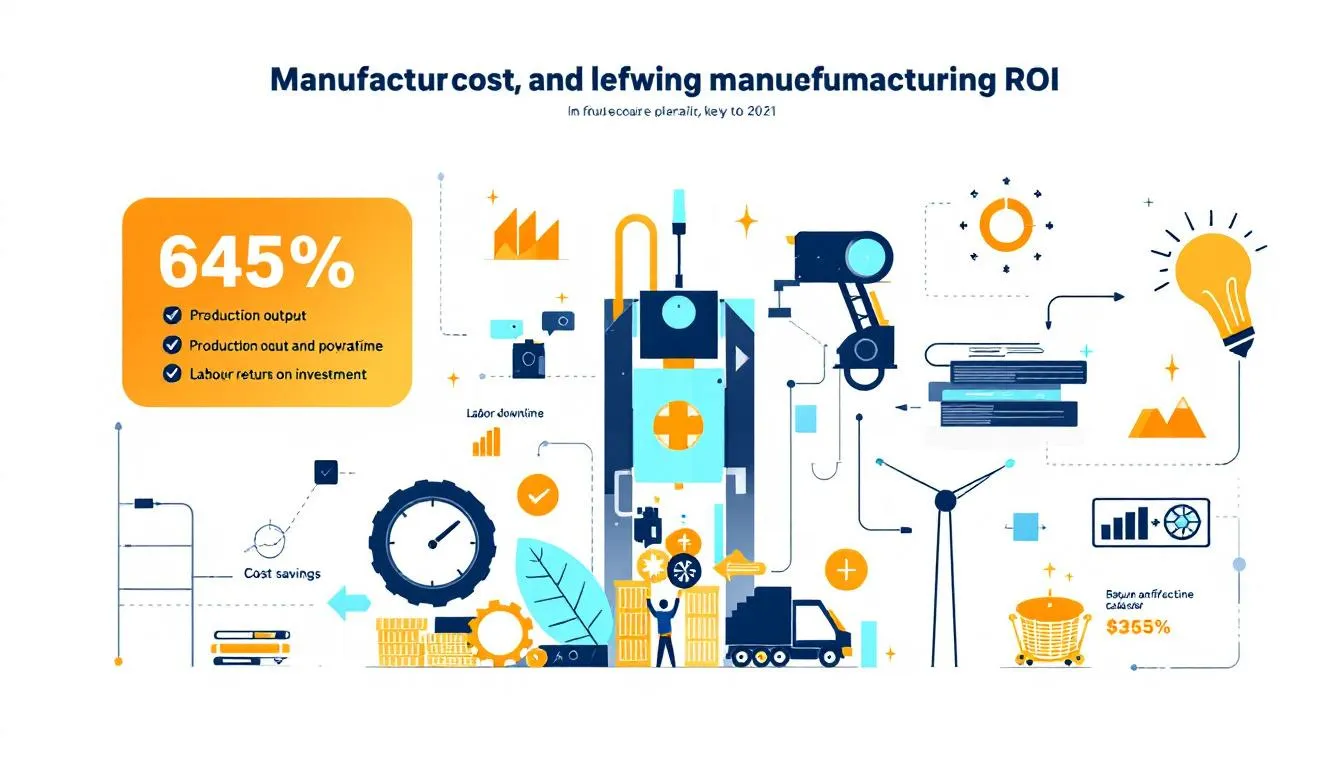
Measuring ROI in the manufacturing industry comes with its own set of challenges. Many manufacturers struggle to quantify the ROI of digital investments, with around 60% lacking full awareness of their digital spending in dollar terms and its outcomes. This lack of visibility can hinder effective decision-making and resource allocation. Almost one-third of manufacturers indicate that they will need to hire more people in an AI-enabled world, highlighting the growing importance of workforce planning in tandem with technological advancements.
Assumptions play a critical role in ROI calculations, as the perceived gain can significantly impact the acceptance of investment proposals by leadership. It is essential to base ROI calculations on realistic assumptions and thoroughly vet the expected benefits to ensure accuracy. Overestimating gains or underestimating costs can lead to skewed ROI results and poor investment decisions.
Accounting for all costs related to an investment, including hidden or indirect expenses, is crucial for accurate ROI measurement. Failing to consider these costs can result in an incomplete analysis and misinformed decisions. By ensuring a comprehensive view of all associated costs, companies can achieve more precise ROI calculations and make better-informed investment choices.
Summary
In summary, understanding and calculating ROI is essential for manufacturing companies to maximize their profitability and achieve strategic growth. By focusing on key metrics, implementing best practices, leveraging digital transformation, and overcoming common challenges, companies can enhance their ROI and maintain a competitive edge in the market. A strategic approach to ROI ensures that investments deliver maximum value and drive long-term success.
Frequently Asked Questions
What is ROI, and why is it important in manufacturing?
ROI, or return on investment, is a key financial metric that evaluates the profitability of investments. Its importance in manufacturing lies in its ability to inform strategic growth decisions and enhance competitive advantage.
What are the key metrics for measuring ROI in manufacturing?
To effectively measure ROI in manufacturing, focus on net profit, cost savings, revenue generated, and market segmentation analysis, as these metrics collectively assess the impact of investments on profitability. Prioritizing these indicators will ensure a thorough evaluation of financial performance.
How do digital technologies impact ROI in manufacturing?
Digital technologies significantly enhance ROI in manufacturing by driving cost savings, improving operational efficiencies, and boosting customer satisfaction. Implementing these technologies is crucial for sustaining competitive advantages in the industry.
What are some best practices for improving ROI in manufacturing?
To improve ROI in manufacturing, implement preventive maintenance, understand the financial impacts of your maintenance operations, and utilize connected analytics. Focusing on both financial and non-financial benefits is crucial for maximized returns.
What are common challenges in measuring ROI in manufacturing?
Measuring ROI in manufacturing often encounters challenges such as a lack of awareness regarding digital spending, reliance on assumptions for calculations, and failure to fully account for all costs, including hidden or indirect expenses. Addressing these issues is essential for a more accurate assessment of ROI.
Share this
You May Also Like
These Related Stories

Best Practices for Manufacturing Process Monitoring
/Shutterstock/2025/shutterstock_2453324915.jpg)
Top Strategies for Boosting Manufacturing Profit
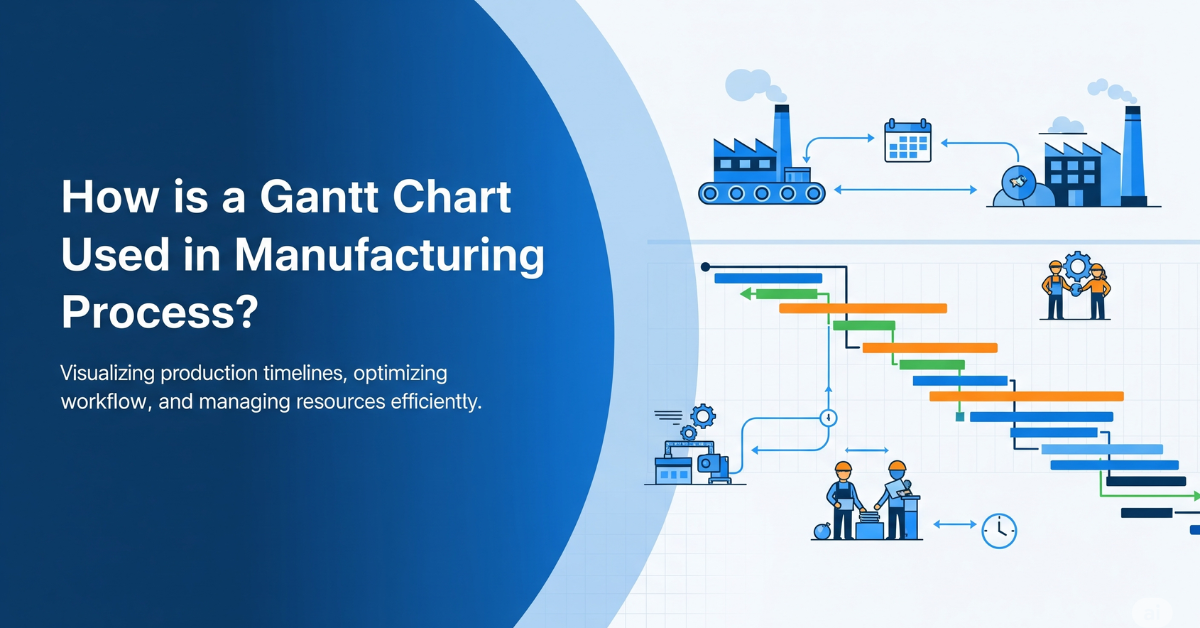

No Comments Yet
Let us know what you think